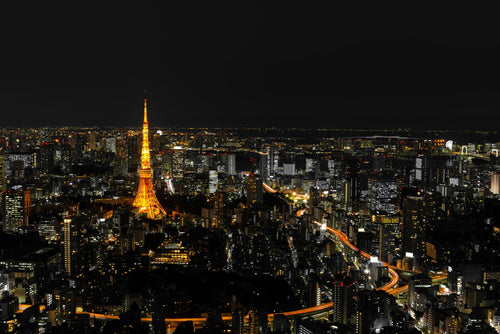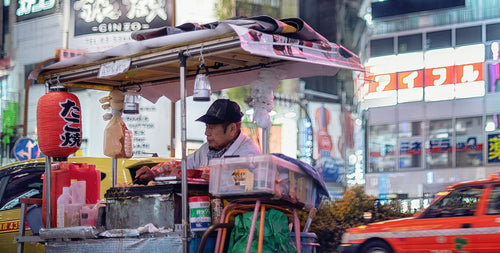
Japan Travel Guide for First-Time Visitors: Costs, Plans, & Attractions
Planning a trip to Japan for the first time? Japan is a captivating destination with its blend of tradition and modernity, world-class cuisine, stunning landscapes, and rich cultural heritage. However, navigating the essentials of travel planning—from budgeting to choosing top attractions—can be a bit daunting for first-time visitors. This guide will cover all you need to know for a memorable journey to Japan, including estimated costs, itinerary ideas, and must-see sights.
1. Overview of Travel Costs
Traveling in Japan doesn’t have to break the bank, but costs can vary significantly based on travel style and preferences. For a moderate budget, you can expect daily expenses of approximately ¥10,000–¥15,000 per person, which includes accommodation, food, transportation, and entry fees to various attractions. Japan is known for its variety of options catering to all budgets, from affordable ramen shops to Michelin-starred restaurants, budget hostels to luxury hotels.
2. Budgeting for a Japan Trip
Japan can be an affordable or luxurious destination, depending on how you plan your trip. Here’s a breakdown of typical daily expenses:
- Accommodation: ¥3,000–¥10,000 per night for budget to mid-range options.
- Food: ¥2,000–¥5,000 per day for local eats and budget dining.
- Transportation: ¥1,500–¥3,000 per day, depending on the region and type of rail pass.
- Attractions: ¥500–¥2,000 per entry, with some free attractions.
Using Japan Rail Passes or regional rail passes is recommended for travelers planning to visit multiple cities, as these passes provide unlimited rides on JR trains for a set period and can greatly reduce transportation costs.
3. Accommodation Options
Accommodation in Japan ranges from budget hostels to luxurious ryokan (traditional inns). Here are some popular options:
관련 게시물
Hostels and guesthouses are plentiful in major cities and popular tourist areas. Many offer private rooms, shared spaces, and a chance to meet other travelers, making them ideal for those on a budget.
관련 게시물
Japan’s business hotels offer clean, simple, and affordable rooms with basic amenities. These hotels are typically located near train stations and are a convenient option for budget-conscious travelers.
관련 게시물
For an authentic experience, consider staying at a ryokan. These traditional Japanese inns provide tatami mat rooms, futon beds, and often include meals. Prices can range from budget-friendly to high-end luxury.
관련 게시물
Capsule hotels, offering compact, individual sleeping pods, are a unique experience for budget travelers looking for a short stay or an adventure.
4. Transportation in Japan
Japan’s public transportation is world-renowned for its efficiency and convenience. Here are the primary options:
관련 게시물
The JR Pass is an excellent choice for tourists who plan to travel between multiple cities, offering unlimited rides on JR trains (including shinkansen bullet trains) for 7, 14, or 21 days. It must be purchased outside Japan and activated upon arrival.
관련 게시물
For those exploring specific regions, regional passes can be a cost-effective alternative to the JR Pass. Each region has its own pass, such as the Kansai Thru Pass or the JR East Pass.
관련 게시물
IC cards like Suica and Pasmo are rechargeable cards for convenient travel on subways, buses, and even some vending machines. They are highly recommended for city travel and can be used in major regions throughout Japan.
관련 게시물
Japan’s local trains and subway networks are reliable and user-friendly, connecting travelers to popular sights within each city. Most systems have English-language signage and maps, making them easy to navigate for visitors.
5. Suggested Itineraries for First-Timers
Japan offers countless places to explore, so here are two popular itineraries for first-time visitors:
관련 게시물
This classic itinerary allows you to experience the bustling metropolis of Tokyo, the historic beauty of Kyoto, and the vibrant food scene of Osaka. Highlights include Tokyo’s Shibuya Crossing, Kyoto’s Fushimi Inari Shrine, and Osaka’s Dotonbori district.
관련 게시물
This itinerary includes a stop in Hakone for hot springs and views of Mount Fuji, as well as Nara, known for its friendly deer and historic temples. It’s perfect for those who want a mix of city sights, cultural experiences, and nature.
6. Top Attractions and Experiences
Japan is home to numerous iconic landmarks and attractions. Here are a few must-visit spots:
관련 게시물
Tokyo offers attractions ranging from the Meiji Shrine and Tokyo Tower to the bustling districts of Shibuya and Akihabara. Tokyo is a city that never sleeps, with unique experiences for every traveler.
관련 게시물
Kyoto is known for its traditional temples, including the Golden Pavilion (Kinkaku-ji), Kiyomizu-dera, and the Bamboo Forest in Arashiyama. It’s a must-visit for those interested in Japanese history and culture.
관련 게시물
Japan’s iconic Mount Fuji can be viewed from nearby areas such as Hakone and the Fuji Five Lakes. For adventurous travelers, climbing Mount Fuji during summer is a popular experience.
관련 게시물
Hiroshima’s Peace Memorial Park and Miyajima’s Itsukushima Shrine (famous for its floating torii gate) are essential stops for those interested in history and scenic beauty.
7. Food & Dining Tips
Japan’s culinary scene is world-famous, offering dishes like sushi, ramen, tempura, and much more. Here’s what to keep in mind:
관련 게시물
For affordable dining, explore local favorites such as ramen, udon, and conveyor belt sushi. Street food is also popular in areas like Osaka’s Dotonbori and Tokyo’s Asakusa, offering takoyaki (octopus balls), yakitori (grilled chicken skewers), and taiyaki (fish-shaped pastries).
관련 게시물
It’s customary to say “Itadakimasu” before eating, which expresses gratitude for the meal. Tipping is not expected in Japan, and in some cases, it may be considered rude. Many restaurants have a ticket machine for ordering, especially in ramen shops, so be prepared to select your meal and pay in advance.
8. Cultural Etiquette and Tips
Japan is known for its respectful and polite society, and visitors are encouraged to follow certain customs:
관련 게시물
Remove your shoes before entering someone’s home, traditional inns, and some temples or restaurants. Look for a designated area to place your shoes, and use the provided slippers if available.
관련 게시물
Public transportation is generally quiet, and talking on the phone is discouraged. Keep your voice low to avoid disturbing others, and always give up your seat to the elderly, pregnant, or those with disabilities.
관련 게시물
If you visit an onsen (hot spring), it’s important to wash thoroughly before entering the communal baths. Towels should not be dipped in the water, and tattoos may not be allowed in some onsen facilities.
관련 게시물
Although English is not widely spoken, many people understand basic phrases, especially in tourist areas. Simple Japanese phrases, such as “Arigatou” (Thank you) or “Sumimasen” (Excuse me), go a long way in showing respect and appreciation.
With careful planning, first-time visitors to Japan can enjoy a rich and unforgettable travel experience. This guide has provided an overview of the essential information needed for budgeting, choosing accommodations, and planning exciting activities. From Tokyo’s cityscapes to Kyoto’s ancient temples, Japan promises a blend of modern adventure and timeless culture that will leave every traveler in awe.
공유하다
관련 게시물
-

일본의 러브호텔 지구 방문: 무엇을 기대해야 할까
일본의 러브호텔 지구는 프라이버시, 창의성, 그리고 약간의 사치스러움이 독특하고 매력적으로 혼합된 것으로 유명합니다. 원래는 커플에게 사적인 휴양지를 제공하기 위해 설계되었지만, 러브호텔은 일본 문화와 환대의 ...
-

도쿄 24시간 카페의 늦은 밤 식사 장소 10곳
도쿄의 활기찬 나이트라이프는 바와 나이트클럽을 넘어, 언제든지 음식 애호가들을 만족시키는 번창하는 심야 식사 문화로 확장됩니다. 이 도시의 24시간 카페는 지역 주민과 휴식, 재충전, 식사를 즐길 장소를 찾는...
-

도쿄에서 어둠 이후 모험을 위한 최고의 야간 투어
도쿄의 나이트라이프는 에너지, 활력, 전통과 현대의 독특한 혼합으로 유명합니다. 조명이 켜진 사원에서 네온 불빛이 비추는 도시 풍경과 숨겨진 문화적 보석에 이르기까지 도쿄는 어둠 속에서 도시의 다양한 아름다움과...
-

일본의 심야 음식 문화: 최고의 길거리 음식 8곳
일본의 심야 음식 문화는 활기찬 경험이며, 특히 도쿄와 오사카와 같은 번화한 도시에서는 맛있는 길거리 음식 노점과 캐주얼한 식당에서 밤늦게까지 독특한 맛을 제공합니다. 짭짤한 라멘에서 지글지글 꼬치에 이르기까...
현재 관련 게시물이 없습니다.




